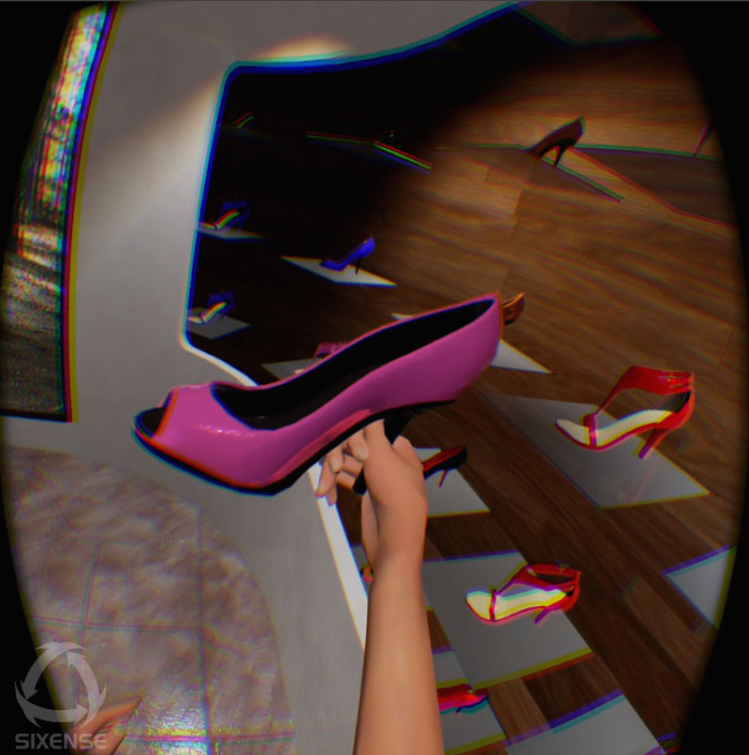The evolution of retail might not seem like the usual fodder for scripted drama, but the recent lineup of PBS’s Masterpiece Theatre has proven that department store displays, annual sales reports and brand recognition can make for must-watch TV. Shows like Mr. Selfridge and The Paradise expose viewers to the exciting early days of retail, revealing how modern shopping experiences first took shape.
Nowadays, the retail industry is at another crossroads. This time, however, it’s not surrounding daring fashions or limited choices; it’s the advent of virtual reality commerce taking hold, and brands looking to grow sales and increase brand loyalty in the future should take note. VR commerce utilizes virtual reality, head-mounted displays (HMD), and smartphones/computers to both enhance and drive the shopping experience. It allows retailers to immerse consumers in custom-created worlds, marrying traditional online shopping elements with 3D experiences to increase consumer engagement. From home décor to apparel, major brands have already taken note of this retail revolution and are offering VR commerce options alongside tried-and-true techniques.
Buy+ may not be a household name yet, but with Chinese e-commerce giant Alibaba at its helm, this virtual reality shopping experience has already revealed the potential of VR commerce. An hour after it launched in honor of Singles’ Day, 30,000 people had already engaged with the platform. Just one week later, and that figure increased to a whopping eight million users. These numbers demonstrate public willingness to explore VR commerce, and the seamless shopping experience achieved when a customer straps on a HMD (even one made of cardboard) truly cements its place in the retail landscape.
While Alibaba is known chiefly as an online retailer, brick-and-mortar brands are also riding the VR commerce wave. Swedish home goods giant Ikea recently unveiled its online virtual reality destination in Australia, which allows customers to experience in-store floor sets as if they were there, as well as make purchases and have them delivered. Similarly, home improvement emporium Lowe’s is dipping its toe in the virtual waters with its Holoroom, which allows customers to fill rooms set to their home’s dimensions with Lowe’s products. Once customers don an Oculus HMD, they can shop the Lowe’s inventory to decorate each room, seeing first-hand what the finished product will look like.
It would be remiss to discuss immersive retail trends without also mentioning the part augmented reality plays. While VR shopping experiences thrust consumers into new worlds, AR provides a stepping-stone of sorts by enhancing the world shoppers already live in. Utilizing the built-in cameras most smartphones are equipped with, and the familiar point and touch mechanic even the most bashful selfie-taker intuitively knows, AR allows shoppers to discover new products and learn more about ones they are already familiar with.
For the most part, when consumers walk into a retail establishment, they are faced with plentiful options, but not enough information to make informed purchasing decisions. Several brands have already recognized this issue and are implementing AR technologies to curb confusion and encourage sales. The North Face, for example, was one of the first retailers to blaze a trail in augmented reality assisted shopping. Last year, the company tasked sales associates in one of its South Korean stores to ask customers if they were looking for merchandise tied to a particular season — such as winter sports apparel — before offering them an Oculus Rift headset which would then place them in a snowy locale, complete with a pack of huskies.
By employing this sort of tactic, The North Face, and other retailers that have implemented AR/VR technologies within overall sales strategies not only bolster consumer engagement and loyalty, but also increase the margins of the bottom line, by presenting shoppers with products they may have otherwise not considered.
Perhaps more than any other factor, the widespread adoption of smartphones has fueled immersive shopping trends. 77 percent of Americans tote these mini-computers around on a daily basis, and with the AR/VR/360-degree support most modern mobile devices offer, it’s no wonder the eagerness to try out new retail experiences has grown. In fact, according to recent study by L.E.K. Consulting, 70 percent of those surveyed were strongly interested in virtual shopping.
While VR-commerce is still in its early days, it has already left an indelible mark on the retail landscape. With early successes like Buy+ driving wider adoption among brands, it’s only a matter of time until shopping in a virtual environment becomes as ubiquitous as 1-click ordering. The writing’s on the wall, and companies who fail to adopt VR-commerce into future strategies, should prepare to face the fate of others that have fallen to the wayside as a result of failing to evolve. After all, profitable retailers always “give the people what they want,” and in this case, 70 percent of them want to use VR-commerce tools to try on new clothes and accessories – customized to their personal taste, of course. Whether
Kimberly Cooper is the CEO and cofounder of Spatialand, a revolutionary VR design platform and tool set for enterprise, brands and consumers to create immersive content destinations.

